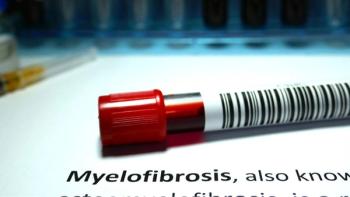
Some With MDS May Benefit from Delaying Stem Cell Transplants
For patients with MDS who benefit from delaying transplants, it’s important to take care of their health while savoring their time before transplant.
It’s important for patients with myelodysplastic syndromes (MDS) to understand whether immediately receiving or delaying an allogeneic hematopoietic stem-cell transplant is best for them based on the individual characteristics of their disease, an expert told CURE®.
An allogeneic hematopoietic stem-cell transplant is when a patient receives healthy stem cells from a donor to replace stem cells that were damaged by the disease or treatment, according to the National Cancer Institute.
A study published in the Journal of Clinical Oncology found that when patients’ genomic features were considered during the transplant decision-making process, it allowed for personalizing risks and effectiveness of a stem-cell transplant for patients with MDS.
“MDS is actually a very heterogeneous disease — there are lots of varieties. And there are some patients with MDS whose disease moves slowly. For a subset of patients, they may live for years with their MDS, sometimes without any intervention [and] other times with gentle interventions to improve bone marrow function,” Dr. Alexander Ambinder said during an interview with CURE®.
Ambinder is an assistant professor and medical oncologist in the Division of Hematology Malignancies, Leukemia Program at the Sidney Kimmel Comprehensive Cancer Center at Johns Hopkins Medicine.
He noted that on the other hand, some patients with MDS have aggressive disease that moves quickly and requires immediate treatment. Because of this, the timing of when patients receive a stem cell transplant is essential, according to Ambinder.
“Some patients may live many years without much intervention and who may feel good during that time of observation or minimal intervention,” he explained. “Doing a transplant too early in those cases — and the most feared possibility — [may] actually do them harm. They could incur a severe complication that will affect them for the rest of their life, or they might even die and lose years that they otherwise would have had.”
For better understanding, Ambinder compared transplant timing with a diving board at a swimming pool.
“This is a little bit like when you’re jumping off of a diving board, trying to figure out when to jump. You don’t want to jump too late and miss the diving board,” he said. “On the other hand, you don’t want to jump too early and not make it into the pool. So the timing is pretty crucial to maximize the benefits of transplant while minimizing the kind of risk to the patient.”
How the Timing of Transplants are Determined
A specific tool, called the Revised International Prognostic Scoring System (IPSS-R), helps doctors identify whether patients have low-risk, intermediate-risk or high-risk MDS, said Ambinder. This is according to three key aspects: patients’ blood counts, bone marrow features and genetic changes in the MDS.
Of note, Ambinder explained that the lower the blood counts are — red and white blood cells and platelets — the higher the risk patients are. Regarding bone marrow, he said that the percentage of blasts (immature white blood cells) are the features doctors look at. Genetic changes entail large pieces of missing genetic material, which Ambinder said is easy to access in MDS cells.
“The IPPS-R [is] a really critical tool that’s helpful in decision making and helping us figure out who’s most likely to benefit from transplant and in whom we ought to delay or defer that decision,” he noted.
What Patients Can Expect and Prepare for During Delayed Transplant
Because some patients with MDS may benefit most from delaying or deferring their stem-cell transplant, as Ambinder noted, it’s important to know what to expect during this time.
The expectation is for patients to maximize their health as much as possible, he said.
“When there may come a time when a transplant does make sense and knowing that a transplant is a difficult procedure for the body, being in otherwise good health can help people, weather the procedure better and may actually allow them to have a better outcome,” Ambinder explained.
However, he also emphasized that during this time of transplant deferment, it’s important for patients to enjoy their life and to “savor that time they have.” Balancing the joy of life and taking the time to take care of their health is an opportunity that not everyone has, Ambinder said.
“Some [patients] really do have to proceed pretty quickly to transplant, they may not have time to work on their overall fitness or whatever other medical issues they may have,” he noted. “So I think this is a tough decision — this is difficult for a lot of patients, I’m sure that there are patients for whom the idea of deferring a potentially curative therapy [causes some] anxiety.”
For more news on cancer updates, research and education, don’t forget to




